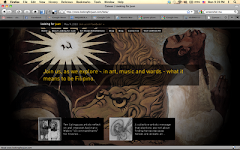Rizal joins ranks of Dickens, Austen
JOSE Rizal’s “Noli Me Tangere” has been published in a new English translation and released worldwide by Penguin Books, one of the major publishing houses of the English-speaking world, under the Penguin Classics imprint. The publication effectively canonizes the novel as one of the classics of world literature.
It is the first time that a Southeast Asian title has been included in the Penguin Classics, which was started in 1946 with the publication of E.V. Rieu’s translation of Homer’s “Odyssey.”
In the book’s blurb, Penguin bills the “Noli” as “the book that sparked the Philippine revolution” and “the great novel of the Philippines.”
“[It] was the first major artistic manifestation of Asian resistance to European colonialism, and Rizal became a guiding conscience—and martyr—for the revolution that would subsequently rise up in the Spanish province,” Penguin said.
The new translation of the “Noli” was done by an American writer, Harold Augenbraum, a scholar of Hispanic-American letters and the executive director of the National Book Foundation and the National Book Awards.
Filipino-American writer Jessica Hagedorn, author of the critically acclaimed and best-selling novel, “Dogeaters,” has said that Augenbraum’s “Noli” was a “beautiful new translation.”
Elda Rotor, Penguin Books Classics’ executive editor, said the publication “represents Penguin’s commitment to publish the major literary classics of the world.”
Rotor, a Filipino-American, said she was not the original acquisitions editor for the book, but “for me, it’s a particular joy on many levels, to place Rizal on the same shelf as Dickens and Austen, to share a classic that is read, studied and celebrated in parts of the world, yet unfamiliar to a wider audience.”
In Manila, the book is available at Powerbooks and Fully Booked.
Scathing portrayal
First published in Berlin in 1887, “Noli Me Tangere” tells the story of Crisostomo Ibarra, who returns from his European studies to find his old town in the grip of social iniquity and decay. His efforts to introduce enlightenment and modernism are defeated at every turn by the Spanish colonial establishment as represented by abusive civil and military officials and obscurantist friars.
Because of its scathing portrayal of Spanish colonial depredations, the book was banned in the Philippines, but copies of it were smuggled into the country for clandestine reading by educated Filipinos.
As a result, the “Noli,” along with its dark sequel, “El Filibusterismo,” which tells of the return of Ibarra as an avenging angel a la “The Count of Monte Cristo,” became the bible of the Philippine revolution against Spain in 1896.
Although Rizal denied any involvement in the revolution, his name became the password of the Filipino revolutionaries, and he was executed by the Spanish authorities on Dec. 30, 1896.
Fascinated
Augenbraum said he stumbled upon Rizal’s novel in 1992 while compiling a bibliography of North American Latino fiction writers. He said he came across the name of National Artist N.V.M. Gonzalez whom he thought to be Latino. He went on to read Gonzalez and “loved it” and thereby got “introduced to a whole world of Filipino and Filipino-American literature, which I began to seek out here in the US.”
“The name of Rizal came up several times, so I read the ‘Noli,’ which fascinated me,” he said. “Then I read the ‘Fili,’ which also fascinated me. Then I read the Austin Coates biography, and Rizal himself became one of my heroes.”
Augenbraum said he tried to get university presses interested in republishing the novels in the English translation by either Charles Derbyshire or Leon Ma. Guerrero, but none was interested. (The University of Hawaii Press has published the Soledad Lacson-Locsin translations of both books.)
In 2002, after editing and revising a Penguin book, Augebraum was asked by Penguin editors if he could recommend a new addition to the Penguin Classics line, and he suggested the “Noli.”
Very excited
“[They] knew very little [of the ‘Noli’], but when they began to investigate, they became very excited,” he said.
“This would be the first Filipino writer in the venerable classics tradition, and the Filipino-American community had been growing,” he said.
Penguin at first thought of adapting one of the existing English translations, but “concluded that it needed a new translation for the American eye and ear,” Augenbraum said.
Augenbraum said he enjoyed translating Rizal. “The ‘Noli’s’ Spanish was not particularly difficult to translate. Rizal wrote a clear, lucid Castilian without much slang and without overusing idioms,” he said.
“I would like to add that the pleasure of translating [and reading] the ‘Noli’ is that the non-central characters are extraordinarily rich,” he said.
Augenbraum said he found it more difficult to be editor than translator.
Bridging cultural divide
“The harder part was to compile the notes that would explain the many, many religious and cultural references Rizal used... The US is not steeped in the Catholic faith and many Americans will probably be reading about the Philippines for the first time,” he said.
Apparently, Augenbraum succeeded in trying to bridge the cultural and historical divide between the “Noli’s” 19th century-Philippines setting and American readers in the 21st century.
According to Hagedorn, Augenbraum’s introductory essay, “is smart and sensitively written, providing great background for Rizal’s rich, moving novel.”
Augenbraum said he liked the Derbyshire and Guerrero translations, but there should be new translations of Rizal’s work.
“Most translators will tell you that each generation should have its own translation of classic works. Language changes over time, political ideals change over time, information emerges over time, new critical thinking emerges. I hope that this translation will be the translation for our time,” he said.
Required reading
Augenbraum said the “Noli” should be required reading in Asian-American courses in US universities “because it is the foundational novel of the nation, with large implications for the diaspora and its influence on other writers.”
According to Rotor, Penguin has learned that the novel has generated interest among professors across the US who would like to make the novel a part of their curriculum.
The new English translation of the “Noli” comes at a time when Filipino critics and historians are starting to complain that there was too much lionizing and even deification of Rizal so that honest critical assessments of his work and legacy have become nearly impossible.
Florentino Hornedo, Unesco commissioner and a literature and history professor at the University of Santo Tomas, said rendering Rizal and his works as a “dogma” was “not good” since the novels were a “fiction” and a creative embellishment, with some exaggerations conditioned by Rizal’s masonic and liberal leanings.
Augenbraum agreed. “The Noli’ is fiction obviously, but [that’s] an interesting point about how historical fiction becomes perceived as history,” he said.
“In my introduction to the ‘Noli,’ I discuss Rizal becoming a sort of ‘santo’ in the Filipino diaspora, no longer a real personage, and I question whether he ever really was a real person, since he saw himself as part of Philippine narrative history and acted accordingly. Although some people have compared Rizal to Jose Marti [the 19th-century Cuban writer and patriot], Marti has never attained the supernatural status of Rizal,” said Augenbraum.
“[Rizal] is a prisoner of his own legend... Whoever he was in life has become irrelevant. He’s probably closer to Joan of Arc or St. George than he is to Jose Marti,” he said.





1 comment:
Perhaps it would be more proper to compare Rizal to, say, Cervantes or Gabriel Garcia Marquez. Dickens and Austen were British writers who wrote in English. Cervantes and Garcia Marquez, like Rizal, were writers in Spanish.
Post a Comment